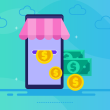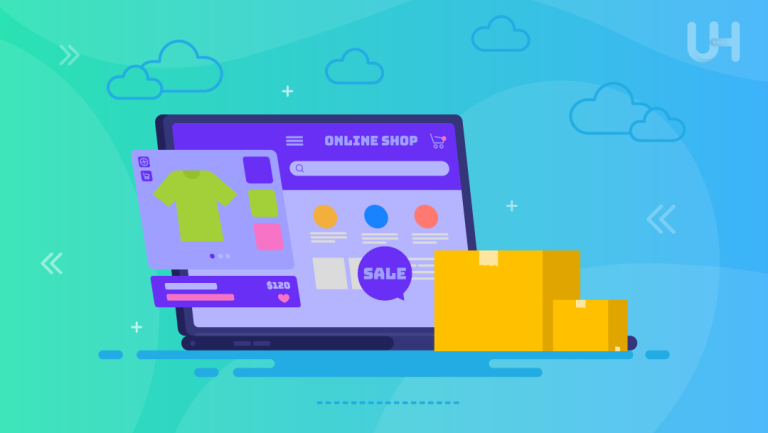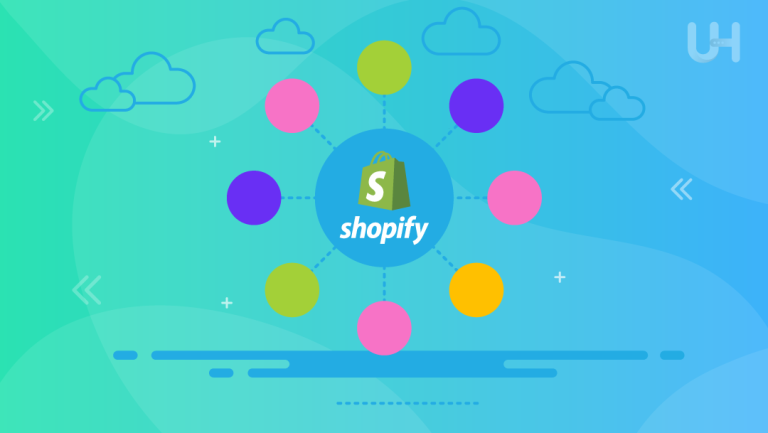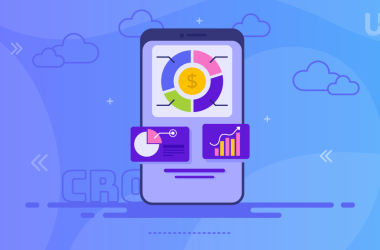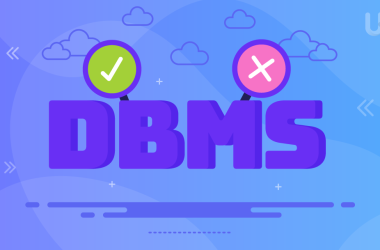eCommerce profitability is a key factor in determining the long-term success of any online business, and understanding the right strategies can make all the difference. Is eCommerce still a goldmine, or is the market overcrowded? Entrepreneurs dream of running an online store, but they wonder if it is still profitable in today’s competitive world. The truth is that online shopping has grown fast. People now shop from home, making eCommerce a massive industry with endless potential. However, with more businesses going digital, the profitability question becomes even more complex.
In this blog, we will see whether e-commerce stores are still profitable in 2025. We will look at what makes some stores succeed while others struggle to survive. You will discover the key factors that affect profits, such as costs, marketing, and customer behavior. We will also share tips to help you build a profitable online business.
The Evolution of eCommerce
In the past, eCommerce was something only a few people could afford or use. Eventually, online shopping became slow, risky, and limited to a few categories of high-demand products. However, with advancements in technology, more people began to enjoy the process of buying things online. Shopping services such as Amazon completely transformed shopping due to the wide range of products offered with fast delivery. Shopify also made it easy for small businesses to create their online stores without technical skills. These e-commerce platforms helped eCommerce grow rapidly and reach more people. With each milestone, online business became more convenient and widely accepted.
Today, customers expect all stores to have fast delivery options, secure payments, and easy returns. Those businesses that once did not treat eCommerce seriously are now scrambling to create an online presence. eCommerce nowadays is given for shopping from most industries with every year becoming increasingly higher than before.
How Profitability Differs Across eCommerce Businesses
Not all businesses generate the same profitability. Profit margins, costs, and possible growth vary with each eCommerce business model. Here are some of the most common models: dropshipping, print-on-demand, wholesale, and private label. Each model has several pros and cons that can affect your store’s profitability.
Dropshipping
The dropshipping product model is popular in eCommerce as it requires very little upfront money. You do not need to stock products. When a customer orders, the supplier will ship the product directly to them. This model is easy to start and has low risk. However, profit margins are small because suppliers take a large cut. Since you don’t control the inventory, it’s hard to ensure quality or fast delivery. Dropshipping works well for new sellers but can be hard to scale due to high competition and small profits.
Pros
- Low startup costs
- No need for storage
Cons
- Small profit margins
- Little or no control over products
Print-on-Demand
The print-on-demand business model allows you to sell custom products like t-shirts, mugs, or notebooks. You design the product, and the supplier prints and ships it after a customer orders. This model is perfect for creative entrepreneurs. There is no need to hold inventory or invest in large stock. The profit margins can be low because production costs are high. Also, scaling can be difficult if your products aren’t unique. It’s best for niche markets with custom designs that attract loyal customers.
Pros
- No need for a large inventory
- Unique, customizable products
Cons
- High production costs
- Difficult to stand out in a saturated market
Wholesale
Wholesale eCommerce is the process of purchasing products in bulk from a supplier and selling them at a higher price. You are responsible for managing your stock and shipping. This model gives you better profit margins than dropshipping or print-on-demand. You buy in bulk, so your cost per item is lower. However, you need upfront capital to buy inventory, and there’s a risk of unsold stock. Scaling is easier because you have more control over pricing, but you need a proper storage system.
Pros
- Better profit margins
- You have control over pricing and inventory.
Cons
- Needs an upfront investment.
- Probability of overstocking.
Private Label
Private labeling is when you develop your brand name for a product and manufacture it with a third party. You have full control over the product, right from the design to the packaging. This model has the highest profit margins because you sell unique products under your brand. However, it requires a lot of effort and investment. You need to manage manufacturing, e-commerce marketing strategies, and inventory. Scaling is easier if your brand becomes popular, but it takes time to build trust.
Pros
- High profit margins
- Strong brand control
Cons
- Requires large investment
- Time-consuming to build a brand
Which Model Is Best for You
Each eCommerce model has different levels of profitability and scalability. Dropshipping and print-on-demand are easy to start but have lower profit margins. Wholesale and private labels require more money and effort but offer higher profits. To select the best model, consider your budget, skills, and long-term goals. You can consider dropshipping or print-on-demand for quick setup with low risk; however, for a higher chance of profit in the long term, the wholesale or private label may require investment and building a unique brand.
Take Your eCommerce Business To The Next Level!
Discover how Ultahost’s eCommerce hosting solutions can boost your online store’s performance and profitability. With fast, reliable, and secure hosting, you’ll be equipped to handle growth and scale with ease.
Cost Analysis of Running an eCommerce Store
There are different costs associated with running an eCommerce store. These expenses directly affect the profit margins of your business. Let’s break down the major costs and see how they impact profitability.
- Platform Fees: You need an eCommerce platform to run your store. Popular platforms like Shopify or WooCommerce charge monthly fees. Some platforms also take a percentage of your sales. These costs can add up, especially for small businesses. Choosing the right platform can save money and improve profits.
- Inventory and Logistics: If you are holding your inventory, you must purchase products upfront. You will also require a place to store the products, such as a warehouse. Shipping and handling may be expensive logistics costs. Such costs impact your profit, particularly if you have free shipping. Reducing shipping costs can be a way of increasing profitability.
- Marketing and Advertising: If your business requires purchasing marketing to win customers, advertising on Google or Facebook or paid ads on various platforms can rapidly add up the cost. A lot of money is spent via email or an SEO. Such expenses are absorbed by your firm if you leave them unaccounted for in your profit figures. Look forward to low-budget marketing to enable you to hike your ROI significantly.
- Payment Gateway Charges: Every eCommerce store requires a payment gateway to receive online payments. PayPal or Stripe charges a processing fee for each transaction. Small processing fees may shave off some profit margins on very low-priced products. Compare your options and get the best rate on a payment gateway.
How These Costs Affect Profitability
All these expenses cut into your profit directly. The more you pay out on the platform, the inventory, the marketing, and even payment processing, the lesser the profit will be. Thus, one must balance their costs and get the proper tools that keep costs as low as possible while profits are at a high point.
Consumer Behavior and Its Impact on eCommerce
Customer behavior plays a big role in the success of an e-commerce store. Shoppers now have higher expectations, and meeting them is key to staying profitable. Let’s explore how customer demands and social proof affect eCommerce businesses.
Customers Expect Free Shipping and Quick Delivery
Shoppers want convenience, and free shipping is now a standard expectation. Many customers abandon carts when they see extra shipping costs at checkout. Offering free shipping can boost sales, but it increases your business costs. You must find ways to balance this expense, like including shipping costs in product prices. Quick delivery is another major expectation. People want their orders fast, sometimes within a day. If your delivery is slow, customers will shop elsewhere. Partnering with reliable couriers can help meet this demand and keep customers happy.
Product Reviews Build Trust and Increase Sales
Before buying a product, most customers read reviews. Positive reviews help build trust and reduce hesitation. People trust other shoppers more than ads, so reviews act as powerful social proof. If your store lacks reviews, customers may doubt the product’s quality. Encouraging satisfied buyers to leave feedback can increase conversions. The more trust you build, the higher your sales and profits.
Ratings Influence Buying Decisions
Star ratings impact whether a customer chooses your product over a competitor’s. Higher ratings attract more buyers, while low ratings can hurt your sales. A product with a five-star rating stands out, especially in crowded markets. Make sure to offer quality products and excellent customer service to maintain high ratings.
Customers want to see that others have bought and liked a product before they make a purchase. Social proof can come in many forms, such as:
- Customer testimonials
- User-generated content on social media
- “Best Seller” or “Trending” labels
This proof gives customers confidence, making them more likely to buy. Adding these elements to your store can boost your credibility and improve sales.
How Consumer Behavior Affects Profitability
Meeting customer expectations often means spending more on shipping, logistics, and customer service. However, happy customers are more likely to return and recommend your store. Reviews, ratings, and social proof also drive more conversions, increasing overall profitability. To succeed, businesses must understand customer behavior and adapt their strategies accordingly.
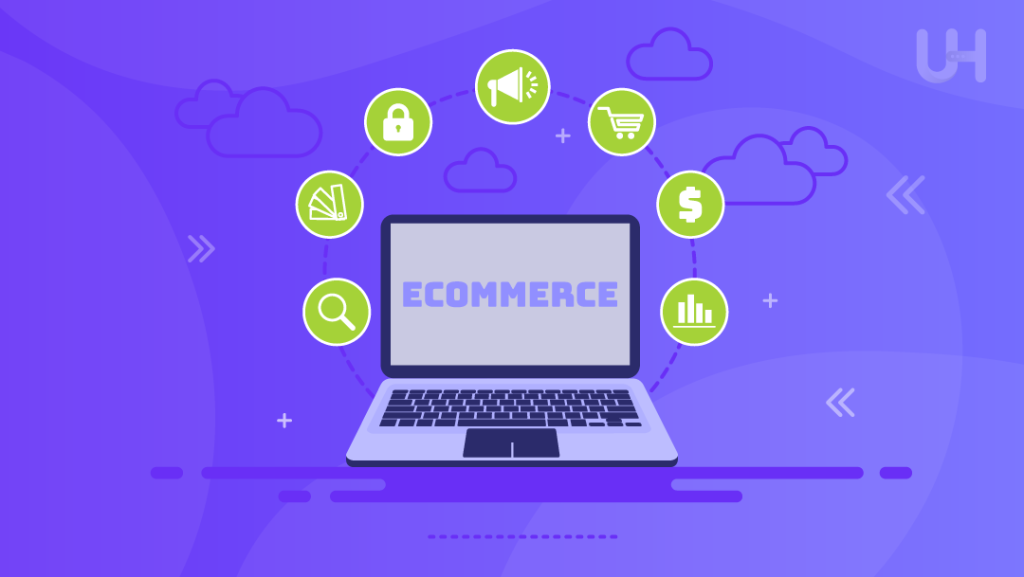
The Role of Technology in Boosting eCommerce Profitability
Technology plays a huge role in helping eCommerce stores make more money. Tools like AI, machine learning, and automation improve how businesses operate. Let’s explore how these technologies increase efficiency and drive higher profits.
AI and Machine Learning
Artificial intelligence (AI) tools can analyze customer behavior to offer personalized product recommendations. This makes the shopping experience more relevant for customers and increases sales. For example, AI tools can suggest products based on a customer’s browsing history. These recommendations improve the chances of a sale. Machine learning also helps predict trends, allowing businesses to stock popular items and avoid dead inventory. Personalization builds customer loyalty, and happy customers spend more, improving overall profitability.
Automation Saves Time and Reduces Costs
AI marketing Automation tools help businesses complete tasks faster and with fewer errors. Repetitive tasks like order processing, inventory updates, and customer emails can be automated. For instance, you can set up automated emails to recover abandoned carts or welcome new customers. This saves time and increases conversions without manual effort. Automation also reduces labor costs by minimizing the need for large teams. The less time you spend on routine tasks, the more you can focus on growing your store.
Inventory Management Tools
Inventory management tools use technology to track stock levels in real time. This helps prevent two major issues — overstocking and running out of products. Overstocking ties up money in products that don’t sell quickly. On the other hand, running out of stock can cause customers to leave and buy from competitors. Tools like TradeGecko, Zoho Inventory, and DEAR Systems help you manage inventory efficiently. By optimizing stock levels, these tools reduce waste and increase profits.
Chatbots Improve Customer Service
Chatbots are AI-powered tools that provide instant customer support. They can answer common questions, assist with product searches, and even handle complaints. Customers appreciate quick responses, especially during checkout. A chatbot can guide them through the process, reducing cart abandonment. Chatbots work 24/7, helping businesses save money on customer support teams. With faster service, customers are more likely to complete purchases, boosting your revenue.
Data Analytics Tools Help Make Better Business Decisions
Data analytics tools help businesses track performance and make smarter decisions. These tools show important metrics like sales, traffic, and customer behavior. Google Analytics, for example, helps you see which products are popular and where customers drop off during checkout. With this data, you can fix issues and improve the customer journey. Better decisions lead to higher sales, fewer costs, and more profits. Businesses that use data analytics and SEO VPS hosting can stay ahead of competitors and grow faster.
How Technology Increases Profitability
Technology makes eCommerce businesses more efficient, reducing costs and improving customer experiences. AI, automation, and data tools help you save time, and personalized shopping, and avoid costly mistakes. By using the right technology, you can boost your eCommerce store’s profitability and scale faster.
Enhance Your eCommerce Store’s Performance!
Ultahost’s Enterprise WordPress Hosting offers the speed, security, and reliability your business needs to thrive. Optimize your online store with premium features and dedicated support designed to grow with you.
Challenges in Achieving eCommerce Profitability
While eCommerce offers great potential, businesses face several challenges. These obstacles can affect profitability. Let’s look at the most common ones and how they impact online stores.
- High Competition: The eCommerce market is crowded. Many businesses sell similar products, which makes it harder to stand out. As a result, it’s difficult to capture customers’ attention.
- Rising Ad Costs: Advertising is essential for driving traffic, but costs are increasing. Platforms like Facebook and Google charge more for ads as competition grows.
- Cart Abandonment Rates: Cart abandonment is a major issue. Many customers add items to their cart but don’t complete the purchase. This can be due to high shipping costs, slow checkout, or doubts about product quality.
- Supply Chain Disruptions: Supply chain issues can affect product availability and delivery times. Delays can frustrate customers, leading to negative reviews or cancellations.
Addressing These Challenges
Overcoming these challenges is essential for eCommerce profitability. High competition, rising ad costs, cart abandonment, and supply chain disruptions all affect the bottom line. However, with the right strategies and tools, businesses can reduce their impact and improve profitability.
Key Metrics to Track eCommerce Profitability
To truly understand the profitability of your eCommerce store using .store domain, you need to track specific key performance indicators (KPIs). These metrics provide insights into how well your business is performing and where improvements can be made. By focusing on the right metrics, you can enhance your profitability and make smarter business decisions. Let’s dive into the most important metrics that will help you measure eCommerce profitability.
Gross Profit Margin
Gross profit margin is one of the most critical profitability metrics for any business. It indicates how much money you retain from sales after covering the cost of goods sold (COGS). Essentially, it tells you whether your pricing strategy is generating enough income to cover production or purchase costs.
To calculate gross profit margin, subtract your COGS from your total revenue, then divide that by your total revenue. Multiply the result by 100 to get a percentage. For example, if your total revenue is $100,000 and your COGS is $60,000, your gross profit margin would be 40%. A higher gross profit margin is essential for sustainability, as it indicates that you’re making enough profit from each sale. This metric can help you evaluate if your pricing is right, if you need to negotiate better deals with suppliers, or if you need to cut unnecessary production costs.
Customer Acquisition Cost (CAC)
Customer acquisition cost (CAC) is a vital metric that helps you understand how much it costs to acquire a new customer. This figure is crucial because it impacts your profitability and gives you insight into the efficiency of your marketing and advertising efforts.
To calculate CAC, divide the total amount spent on marketing and sales by the number of new customers acquired during that period. For instance, if you spent $5,000 on ads and gained 100 new customers, your CAC would be $50. It’s important to keep CAC as low as possible without sacrificing quality. If your CAC is too high, it means you’re spending too much to acquire customers, which could hurt your overall profitability. Monitoring this metric regularly helps you assess the effectiveness of your ad campaigns and identify cost-effective ways to bring in new customers.
Customer Lifetime Value (CLV)
Customer lifetime value (CLV) is the total revenue you can expect from a customer over the entire duration of their relationship with your business. It’s one of the most important metrics because it gives you an idea of how valuable each customer is in the long term.
To calculate CLV, multiply the average purchase value by the number of purchases per year and the average customer lifespan. For example, if the average customer spends $100 per year and remains a customer for 5 years, the CLV would be $500. By increasing CLV, you can significantly boost profitability without having to acquire new customers. Focusing on customer retention through loyalty programs, great customer service, and personalized marketing can help increase CLV. A higher CLV indicates strong customer loyalty, which is often more profitable than acquiring new customers.
Conversion Rates
Conversion rate measures the percentage of visitors who complete a desired action on your website, such as making a purchase. A high conversion rate shows that your site is effective at turning casual visitors into paying customers.
To calculate the conversion rate, divide the number of sales by the total number of visitors, then multiply by 100 to get the percentage. For example, if 1,000 visitors come to your site and 50 make a purchase, your conversion rate is 5%. Improving conversion rates is essential for increasing profitability because it means you’re making the most out of your website traffic. Small changes such as simplifying the checkout process, offering promotions, or improving product descriptions can significantly improve your conversion rates. The more visitors you convert into paying customers, the more profitable your store becomes.
Why These Metrics Matter
Tracking these key metrics provides you with a detailed understanding of your eCommerce store’s profitability. Gross profit margin allows you to measure the financial health of each sale, while CAC helps you control marketing expenses. CLV provides insight into long-term customer relationships, and conversion rates show how effective your website is at generating sales.
By closely monitoring these metrics, you can identify weak spots, make data-driven decisions, and ultimately increase your profitability. Using these insights, you can optimize your pricing, marketing, customer service, and overall strategy to boost revenue and sustain growth. Balancing all these metrics ensures that your business is profitable and scalable in a competitive eCommerce landscape. Furthermore, to maximize the efficiency of these real-time support features without sacrificing your website’s performance extensions.

The Impact of Global Markets on eCommerce Profitability
Selling internationally can open up new revenue streams but also comes with challenges. Understanding these challenges is essential for businesses that want to expand globally. Let’s explore the impact of global markets on eCommerce profitability.
- New Revenue Streams: Selling internationally gives you access to more customers. By tapping into global markets, you can reach people who might not be available locally.
- Shipping Costs and Logistics: Shipping internationally is more expensive than domestic shipping. The costs include packaging, delivery fees, and customs charges.
- Complex Tax and Duty Regulations: Different countries have different tax rates and regulations for imports. Understanding international taxes, customs duties, and VAT is critical for managing expenses.
- Currency Conversion and Payment Processing: Dealing with multiple currencies adds another layer of complexity. Currency fluctuations can impact profitability, making it harder to predict income from international sales.
- International Competition: Selling globally means competing with other international businesses. In some markets, local competitors may have stronger brand recognition.
- Cross-Border Platforms: Platforms like Alibaba and Amazon Global make international selling easier. These platforms offer global reach and simplified processes for shipping, payments, and customer service.
Sustainable Practices and Their Effect on eCommerce Profitability
Sustainability has become a major trend in the eCommerce world. More consumers are choosing brands that prioritize eco-friendly and socially responsible practices. These brands use sustainable materials, reduce waste, and focus on ethical production. As a result, they attract customers who value environmental and social causes. This shift is driving businesses to rethink their operations and invest in sustainable practices to stay competitive in the market.
Adopting sustainable practices can also increase brand loyalty, which directly impacts profitability. Consumers are more likely to return to and recommend brands that align with their values. As trust in a brand grows, so does customer retention, leading to higher lifetime value. Additionally, being known for sustainability can help businesses stand out, allowing them to charge premium prices. Thus, sustainability not only attracts customers but also builds long-term profitability.
Conclusion
eCommerce can be highly profitable if you use the right strategies. From selecting the best business model to managing costs and understanding consumer behavior, every step plays a crucial role in success. By leveraging technology, tracking key metrics, and embracing sustainability, you can boost your profitability. Before diving into eCommerce, it’s important to evaluate your business plan critically and make informed decisions. Explore the opportunities and turn your eCommerce dream into a profitable reality!
As you work towards making your eCommerce business more profitable, having a reliable and secure hosting solution is essential. Ultahost’s Dedicated Storage Servers provide the perfect foundation to scale your online store with high performance, top-tier security, and unmatched reliability.
FAQ
Is eCommerce profitable for new businesses?
Yes, eCommerce can be profitable for new businesses with the right strategies, strong marketing, and efficient operations.
What makes eCommerce profitable?
eCommerce profitability comes from low overhead, efficient logistics, and effective marketing. A strong online presence, coupled with customer loyalty, helps maximize profits.
Are online stores profitable in the long run?
Yes, online stores can be highly profitable in the long run if you maintain consistent growth, optimize marketing, and provide excellent customer service.
How can I improve eCommerce profitability?
To improve eCommerce profitability, focus on cost management, enhance customer retention, and use data-driven marketing strategies to boost sales and reduce expenses.
What are the main challenges to eCommerce profitability?
Common challenges include high competition, rising advertising costs, cart abandonment, and supply chain disruptions.
Is eCommerce profitable for small businesses?
es, eCommerce can be profitable for small businesses by targeting niche markets, offering unique products, and using cost-effective marketing strategies.
Can sustainability impact eCommerce profitability?
Yes, eco-friendly practices can improve brand loyalty, attract more customers, and justify premium pricing, positively influencing long-term profitability.


